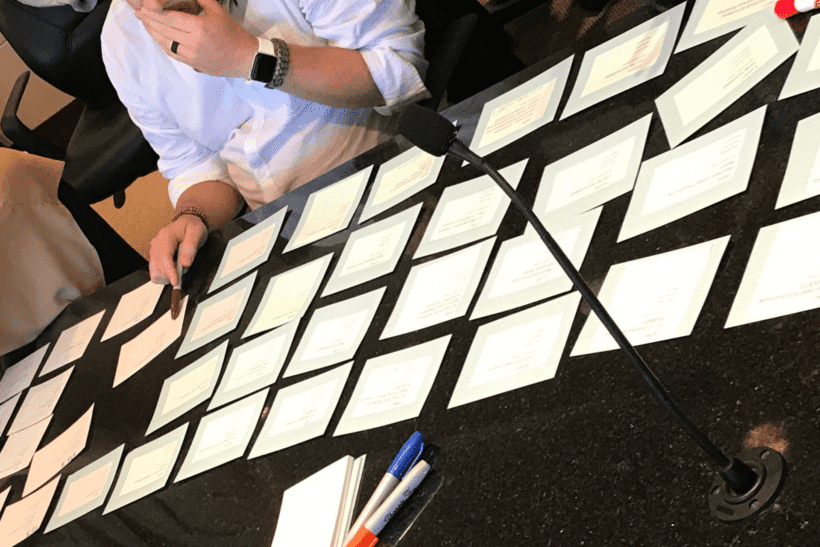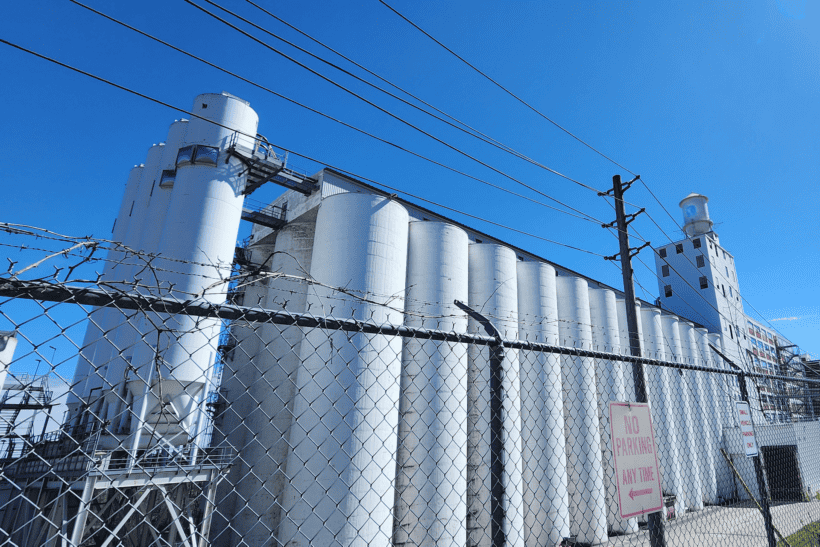Fast, effective, and reliable prioritisation is a key skill in any business. Understanding the impact, effort, dependencies, and risk associated with implementing new business capabilities is a challenge that McKenna Agile Consultants have helped with on many occasions.
Whether we are coaching Agile Release Trains (ARTs) to sequence their Program Backlog of Features more effectively or transforming a Portfolio using Lean techniques, the first question that we ask when looking at prioritisation is;
“How do you prioritise today?”
Common answers include models like MoSCow, Kano, 9 Box, and RICE. We have even been introduced to some complex internal mechanisms involving a multi-tab spreadsheet.
We then follow up our opening question with;
“And how is that working out for you?”
To which we are not surprised to hear things like “everything ends up being top priority, so nothing is priority”, “the person who shouts the loudest wins”, or even “it doesn’t matter, the boss just decides”.
Sound familiar? Read on to find out how we successfully use Weighted Shortest Job First to bring objectivity to prioritisation, build alignment between stakeholders, implement consistency in the process and smooth flow to drive better economic outcomes.
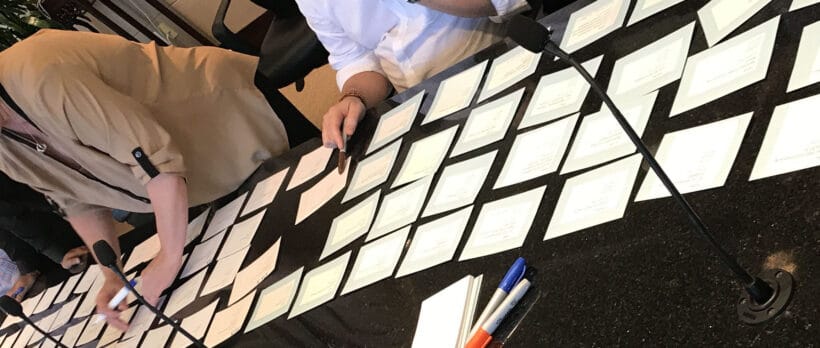
What is Weighted Shortest Job First?
Popularised by the Scaled Agile Framework (SAFe), Weighted Shortest Job First (WSJF) is a prioritisation model that enables organisations to achieve better economic results.
WSJF is applied to Features at the ART (Program) level and to Epics at the Portfolio level. In SAFe, WSJF is estimated as the Cost of Delay (CoD) divided by the job size/duration. The CoD estimates the cost to the organization to not implement this Feature or Epic.
To estimate the Cost of Delay, we add together relative estimates for the User/Business Value, Time Criticality and Risk Reduction/Opportunity Enablement. This result is then divided by the relative Job Size.

What Are The Benefits of WSJF?
We believe that WSJF is one of the most collaborative, engaging and effective prioritisation tools in a flow-based environment – providing it is well facilitated by following some of the points below.
We recommend experimenting with using WSJF for the following reasons:
- Alignment – through discussing items lever by lever, stakeholders can align on the content and benefits of each Epic or Feature.
- Consistency – organisations who commit to using this tool start to see advantages in using the same tool and same definitions of the levers consistently. This means that people in the organisation are all speaking the same language so they can effectively prioritise anything against the levers of WSJF.
- Flow – As we divide by the Job Size to calculate the priority using WSJF, smaller items find themselves rising to the top of the priority list. This introduces a bias towards creating smaller Epics and Features that still deliver benefits to the organisation or the end user. This can help organisations to focus on reducing batch sizes and limiting work in progress, in addition to challenging them to think differently about larger efforts of work.
How to Lead Effective Prioritisation Workshops?
Here are 5 top tips for success we’ve learned from facilitating hundreds of WSJF workshops over the years.
Prioritise Preparation
The adage is “if you fail to prepare, then you prepare to fail” and this couldn’t be truer when it comes to running prioritisation workshops. Bringing together multiple stakeholders and subject matter experts for a few hours to prioritise is an expensive meeting, so why do so many companies consistently waste money by not ensuring that their people are prepared?
As the facilitator of the prioritisation workshop, it is your responsibility to ensure that the workshop delivers value. Here are our steps to help you be ready for the session:
1. Brief the Epic/Feature Owners ahead of the workshop
Brief the Epic/Feature Owners ahead of the workshop so that the content to be prioritised is ready. This could include reviewing any Lean Business Cases, critiquing Epics, and checking Features. You may need to spend time coaching the owners so they know what is expected of their content. If you do not invest the time to do this, you will waste time making assumptions and discussing something at length that is not ready to be prioritised. To deal with this, we have recommended to our client that they disregard the item that is not ready from the prioritisation discussion (to the annoyance of some stakeholders).
2. Share the content to be prioritised with the attendees ahead of time
Share the content and make it clear that this pre-reading is a meeting pre-requisite. Consider opening with the question “does anyone have any questions from the pre-reading of the content?”. Don’t be afraid to cancel the meeting if people have not done the pre-work – they will generally learn a lesson and thank you in the long run for not wasting their time trying to prioritise something that nobody is aligned on. We have had instances where this under-prepared scenario has happened with a single client multiple times. To solve this, we extended the workshop and spent the first 60mins for “silent study”. We instructed the group to study the materials, note down any questions and then proceeded to move onto the prioritisation. This facilitation technique also works great to change the pace of meetings if you ever feel like you are constantly back-to-back on video calls.
3. Make sure people understand what WSJF is
It is essential that the people doing the prioritisation understand WSJF and how it is used effectively. We have found that it does not matter if we spend 10 minutes or 1 hour explaining it, people still struggle with it for the first few times. In our experience, it is best that people learn by doing. To achieve this, we use module 1 of the experiential learning game “SAFe City”. This is a fun, safe-to-fail learning experience to get your stakeholders to grips with the nuisances of WSJF. After this we jump straight into prioritising real work.
Understand What Your Value Is
The first lever of WSJF that we like to start with is User-Business Value. To many people, this is perhaps the easiest lever, however, we have found that this is the most mis-aligned lever in these workshops. To survey what people think User-Business Value is to them in their context, challenge the group to define “what is our User-Business Value”. To some organisations, specifically product-based ones, it’s relatively easy – it comes down to revenue. However, there can be so much more to value, especially when we have worked for non-profits or for very environmentally conscious companies.
To improve the alignment within your stakeholders, take the time to align on Business Value – is it driven by growth, cost savings, impact on the environment, employee satisfaction, user impact or something else entirely? If you take the time to drill into this and create real examples of what value creation looks like, you’ll be able to have deeper, more meaningful conversations around the value that this work will generate.
When doing this, watch out for stakeholders wanting to add more levers to the calculation to cover additional concepts. This is a slippery slope and can lead to excess levers meaning that prioritisation takes longer and can allow the tool to be gamified for someone’s own benefit.
Take Your Time With Time Criticality
This is what we have observed to be the most rushed lever of the three Cost of Delay components. Do not be afraid to pause and think deeply about the time criticality. Keep in mind market events and rhythms, items outside of your control that are happening and the deterring of value over time.
One client that we worked with had a novel, yet consistent way to deal with time criticality. They agreed that if an Epic/Feature had no fixed date (external deadline, market event etc), then it would be scored a “1”. Items with a fixed date were then relative sized along the scaled based on the date associated. Although this approach didn’t consider value deterring over time, it was consistent and worked in practice for them.
Balancing Risk Reduction and Opportunity Enablement
Many people struggle with relatively sizing the lever or Risk Reduction and Opportunity Enablement in the Cost of Delay as it requires you to shift your thinking to two levers at once. To combat this, we like to use a simple visual to plot the items against one another using a simple X and Y axis. Once you’re finished, draw the lines and they are your relative sizes.
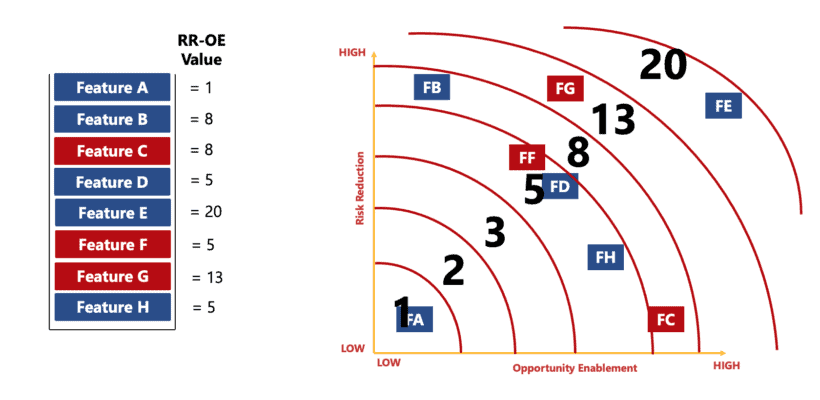
Strong, Impartial Facilitation
As the title of this article states, WSJF is more than just a tool, it is a skill. Like all skills, it needs to be practiced, polished, and refined over time.
To get the best out of your WSJF workshops, we would recommend having a strong, experienced facilitator to coach the stakeholders, hold each other to account and to ensure a smooth flow to the sessions. This includes small things like constantly asking questions like “are you talking about lever X now, or lever Y?”, “which element of our definition of Business Value does that address?” and “is that Business Value today, or Opportunity Enablement in the future?”.
Prioritisation can be a sensitive subject, especially when you have multiple stakeholders competing for the same teams, people, and resources, so a confident, impartial facilitator is key to success.
Before the majority of the people that we worked with went to remote and flexible working, we loved to run WSJF sessions in person, spreading out the items to be prioritised on index cards across the table. Consider how best to facilitate this online. We have managed to recreate the same tangible feeling of moving around index cards by setting up a host of virtual collaboration spaces using tools such as Mural. This requires thinking about the first tip in this article – prioritising preparation and set up your facilitation space in advance.
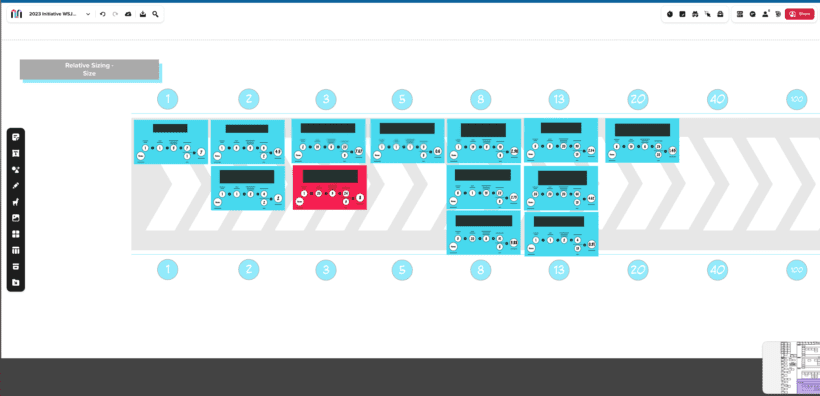
How Often Should You Run WSJF Workshops?
There is not a right or wrong answer to this, it is based on the needs of your organisation and the market that you are operating within. It is essential that your prioritisation reflects what you know today, not what you knew the last time that you prioritised. Prioritisation should be fluid, meaning that you need to be agile in reassessing your prioritisation. External factors can lead to changes in your WSJF calculations, such as Time Criticality as you approach a seasonal event, or a competitor bringing a new service to market.
At the Program (ART) level, some of our clients have matured their process enough so that WSJF is conducted every week or sprint, during Program Backlog refinement sessions for newly introduced Features. Other Clients of ours prefer to do WSJF once per Program Increment (or quarter), ahead of their next PI Planning event. We see a similar cadence and behaviours at the Portfolio level, however on a smaller set of Epics, due to the time required to build a high quality lean business case.
Our recommended approach is that you review your priorities on a regular cadence, so that you can make adjustments as you learn and identify instances when you need to conduct a more thorough prioritisation workshop. This regular approach will enable you to continually practice the skills and mindset required to enable you to drive better results from your prioritisation.
Add WSJF to Your Skill Set
Like with all tools and frameworks, WSJF is not the ultimate answer and relies on human interaction and intervention. It is OK to override the results – providing that you do so consciously and intentionally, with unanimous agreement.
WSJF may be a prioritisation tool, but for it to be truly effective, it needs to be practiced and honed to be a skill within your organisation – add it to your skill set and use it to elevate your prioritisation conversations.
If you’re looking for training or consultancy support on this topic, don’t hesitate to get in touch to discuss our team.
